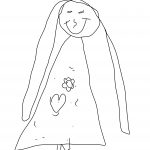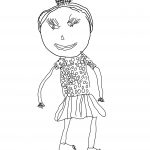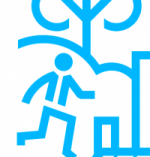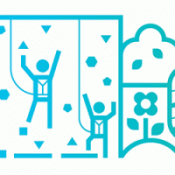One mum’s experiences of our work together with her 18 month old son:
Sarah was able to explain which parts of his development we should pay attention to and gave us ideas for exercises we can continue to focus on at home in order to target the specific areas. Sarah also explains how we’ll know when what we’re working has ‘worked’ My husband describes it as feeling like we have a ‘road map’ now so we know how to get to our destination instead of just trying to figure it out for ourselves and hoping for the best.
We’ve seen huge changes in our son surprisingly quickly. He’s suddenly leapt forward in his physical movement and stability as well as his understanding, social and communication skills. There’s still work to do but the progress he’s made is tangible.
The great thing is that the exercises are all things we can weave into our day easily. Even his grandparents are on board. My mum often sends little parcels through the post saying ‘these will be great for his hands’ or ‘I thought this would be fun to do when you work on crawling’ his other grandma can be heard saying ‘what lovely flat hands’ when they’re playing. His child minder also finds it easy to incorporate activities to support our son’s development that she can do with all of the children she cares for. That’s the beauty of the BUSS model. It involves really simple exercises and interventions that can be done anywhere, are great fun and don’t need lengthy therapy sessions to see rapid improvements.
Our son has great fun doing it… He doesn’t realise he’s doing ‘work’ and I can’t wait to see where the BUSS model takes him in the future.
closeI met Elsa and her family on the 4 stage BUSS model at Oakdale. Elsa was 6.5 years old when we started working together and Elsa’s mum did an amazing job of tracking the changes she noticed in the year following the end of the intervention. She divided them into 3-6 months post intervention and 6 – 12 months post intervention. There’s a much fuller account of the intervention and mum’s account in the ‘Building Underdeveloped Sensorimotor Systems’ book, but I thought it might be helpful to just hear from Elsa’s mum very briefly about some of the changes she’d noticed at 3-6 months post intervention, and also to look at Elsa’s human figure drawings before and after the intervention.
3 – 6 months post intervention
Bodily Regulation
Vestibular and Proprioceptive Systems
Sitting – better able to sit on a chair at mealtimes – at home this means she eats much better. At school she finds it much easier to sit and is able to complete tasks. At home she can sit at the table and write her homework really neatly. Elsa is delighted that her letters look the way she’d like them to!
Elsa recently completed a wood balancing trail without any help- she would never have been able to do this before.
Overall walking and running are much smoother and better co-ordinated. Elsa gets pleasure from moving around and being able to do the things she wants to do.
Elsa now goes up and down stairs without using her eyes to track her movements or her hands on the banisters. She comes down putting one foot on each step – and can do this at various speeds
She can now do handstands and really good cartwheels. Elsa also loves hula hooping – these are all things Elsa tried before but just didn’t have enough control of her body to be able to do them. She’s also started learning to roller skate
Tactile System
Much better eater – less fussy, enjoys food more
Emotional Regulation
I’ve noticed Elsa doing things that she’s never been able to do before in terms of understanding herself on an emotional level and being able to regulate. A couple of examples from this week – when Elsa gets angry she now asks if she can do some exercise or read a book like her ‘how are you feeling today’ book. She’s got a sense of how she’s feeling and that she needs to calm down and is beginning to be able to do that. The second one happened last week, and after a crying session where Elsa suddenly said she had tummy ache (she had been fine all evening) she finally managed to tell me that she felt lonely in her bedroom at night and it was too dark. This is the first time she’s been able to tell me exactly what she feels’
Angry outbursts at home have definitely decreased as Elsa is better able to understand herself and how she was feeling. Bedtimes have also got a lot better – both in terms of how long it takes for Elsa to get off to sleep and also how much parental intervention is required.
Human Figure Drawings
As part of the assessment and the follow up session (usually 8 weeks later) we ask children to draw the best picture they can of a whole person. We’re looking at lots of things here, but it’s been interesting to see the changes in these pictures – and Elsa’s was quite a dramatic change!
Before After


There’s a much fuller account of Lenny’s therapy in the ‘Building Underdeveloped Sensorimotor Systems’ book, but mum and I thought it might be helpful to share some brief sections of that.
Lenny was six years old and in Year One at school when I met him. School had just begun to talk to mum about whether his needs would be better met in an alternative provision – none of the strategies they were using seemed to be working. Lenny seemed hyper-aroused nearly all of the time and spent his day racing around school. He ran through rather than round other children, couldn’t sit on his chair or the carpet for longer than a couple of seconds, and was constantly getting into altercations with other children.
Lenny’s mum was fantastic and together we started to work on Lenny’s tactile, vestibular and proprioceptive systems and we worked together for almost a year. Mum describes some of the differences she began to notice.
“At school , staff were saying that Lenny had really calmed down a lot – and it was nice just to have people saying something positive to you, rather than the walk of shame. He managed to be able to tolerate groups after school, which he’d not been able to do before, and extracurricular activities he’d not managed before– it was really life changing for him
Before the whole queuing up and taking turns was a big no no, but I remember we went to a farm about a year or so after we’d met you, and normally, going to a farm and having to wait for a go on a rope swing would be really hard for him. And I was a bit anxious watching him queue up – and it was a bit of a free for all, nobody was really supervising their children and he stood and waited and he waited. I was thinking, oh gosh, something’s going to happen in a minute, but he just waited and then he said to this girl, ‘can I have a go please’ – and I was amazed that he could manage that! So that was – wow – that’s just a major step. Then he’s moved onto other successes with his football – he’s a goalie and was scouted by a premiership team and went and trained with them for a while – and managed it! He really enjoyed that – he’s just doing so well.”
It was Lenny’s mum who ‘invented’ bubble mountain, which is now a firm favourite with many families- you can watch Sarah and her daughter doing it here
closeWorking with older children and teenagers can be really constructive – it’s usually possible to think together about the concepts of the model and for the young person to think about how it might apply to them. They’re usually pretty aware of what they can and can’t do and have often consciously developed strategies to manage – a fifteen year old recently described feeling so self conscious about running because her arms just seemed to have a life of their own, making her look like an octopus, that she either completely avoided any physical activity or tried to keep her hands in her pockets when she was doing anything physical.
For others, that feeling of being different to others and having to struggle physically on a day to day basis, means that they can become really depressed and hopeless. While I always wish that I could have met them at an earlier point in their lives, it’s great to be able to help them so that they can use their energy for normal teenage things and not to try and manage their bodies.
Amber is one such young person – we only met for a few sessions, but she was so relieved to find out that there might not be something wrong with her physically, and that it might be possible to work to fill in the gaps, that she made fantastic progress… When I first met Amber, her foundation sensorimotor systems were so underdeveloped that she had to expend a phenomenal amount of energy just trying to ‘manage’ her body. She struggled with everything from getting dressed, making breakfast, writing, running – everything was an uphill struggle, leaving very little energy for creative thought or friendships. Amber and her mum worked really hard together to rebuild those systems and Amber herself described how much less tired she felt once her foundation system were in better shape, and described the confidence she found she had to go out and do things, make friends, engage in activities that she’d often thought that she’d like to do but just couldn’t manage. Amber’s mum writes a really moving account of the work in the ‘Building Sensorimotor Systems in Children with Developmental Trauma’ book.
close



"It was really interesting thinking in an integrated way about the impact of regulated trauma. Really loved the model of creating a shared narrative around the child with family and wider super system ahead of assessment. I also loved the “trying it out” time for parents!"
"I found it interesting, thought-provoking, and enlightening. A lightbulb moment!"
“The best thing is that the strategies are easy to do – don’t focus on feelings and emotional issues. Children might enjoy the practical suggestions rather than trying to explain ‘why’ they’re doing something they shouldn’t.”
"Thank you all for your amazing support all the way through – the training and supervision is fantastic and so thoughtful. Honestly the best training I have done!"
"It was so useful to get a real understanding of how and why our son acts and thinks the way he does"
“Very inspiring trainer: so passionate and knowledgeable with a cheeky sense of humour brought everything alive.”
“I will really be able to integrate some of this into my Theraplay practice, as well as when training adopters.”
"I can see how this can be applied to many children"
“I got a real sense that Sarah wants people to learn and be confident to use this approach.”
"All aspects of the worship were useful! Especially the practical activities, I can definitely implement most aspects of the workshop into my working day"
"The most interesting part was listening to Sarah explain the model in such an informative engaging, warm, and passionate way"
“Thank you, really motivated to incorporate this into school”
If you would like to search for anything on our website, please type here and click ‘search’